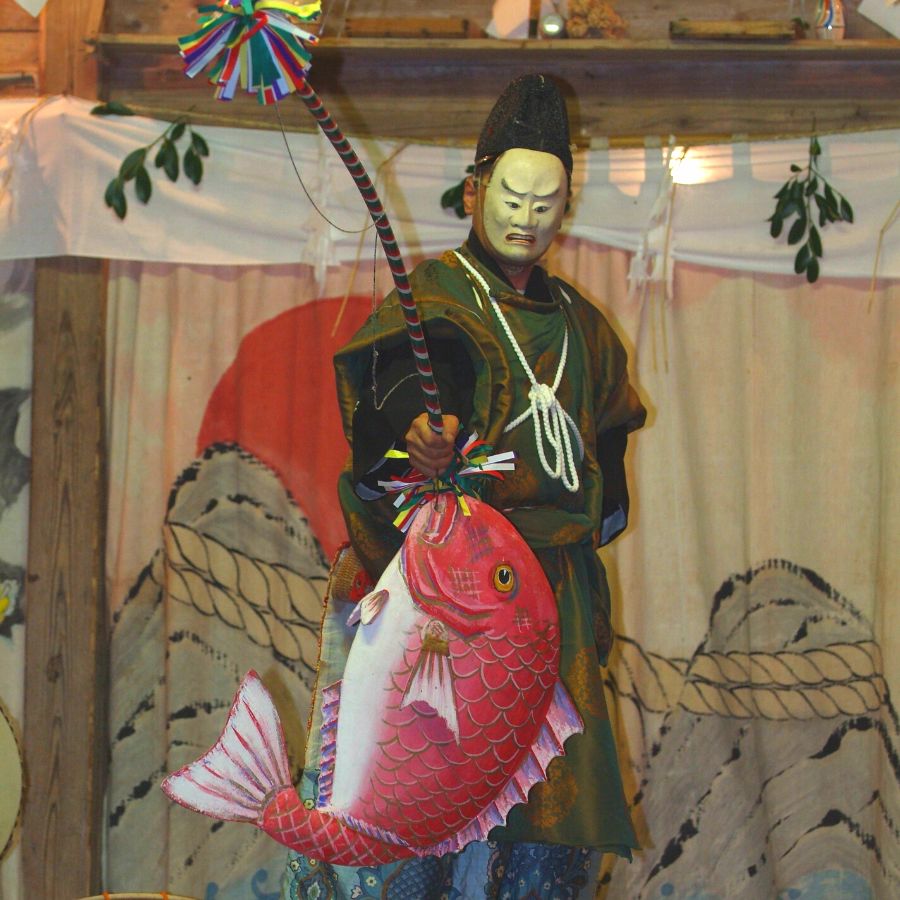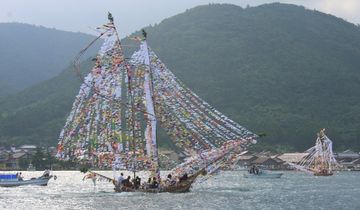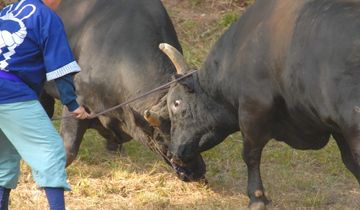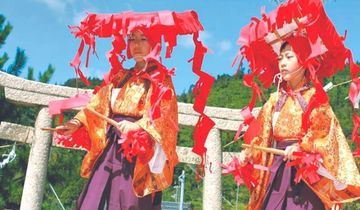
Lifestyles and Traditions - Culture
Compared to Iwami Kagura (a well-known kagura on mainland Shimane Prefecture), Oki Kagura shinto dances are simple and ancient, and have been passed down through a family lineage of kagura specialists called sha-ke. In the past, there were 13 such families on Dōgo and 5 in Dōzen, but nowadays kagura shinto dance is performed by local residents. At Oki Shrine, kagura shinto dance is not limited to being performed as a dedication to the deity, but is also performed to pray for bountiful harvests and good hauls of fish, rain, protection from plague, safe sea voyages, etc. Therefore, shrine maidens, or miko, play an important role.
Oki Kagura can be broadly divided into Dōzen Kagura and Dōgo Kagura. The styles of performance are different, and the contents of the dances that share the same name are different, too. For Dōzen Kagura, dancers dance to fast and lively music at the center of a stage the size of about 4 tatami mats, or on a boat. On the other hand, Dōgo Kagura is divided into Suki Kagura and Ochi Kagura, and the dancers dance to slow music on a narrow board (the size of about 2 tatami mats) at the center of the stage.





